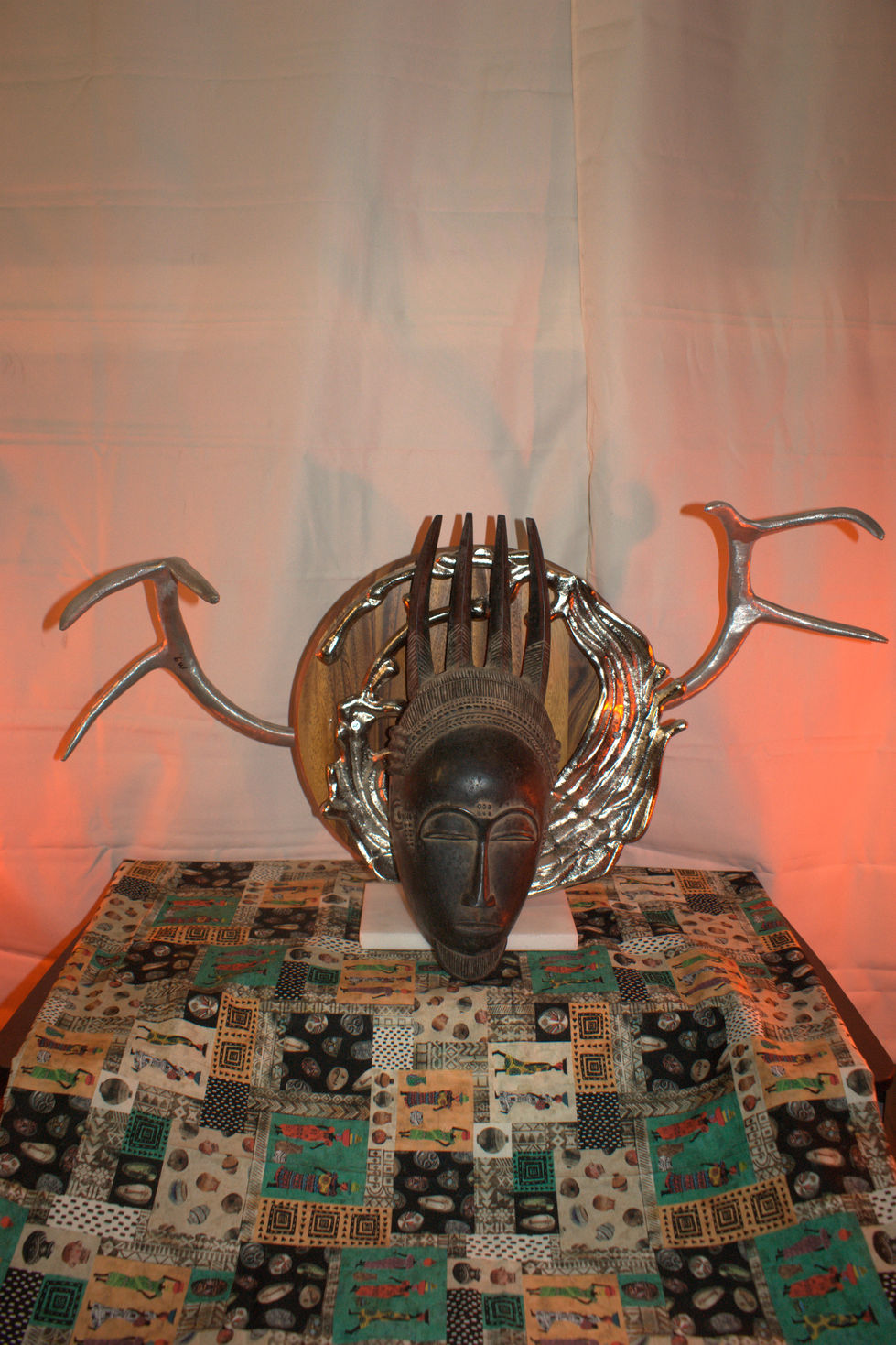W🌍RLD HISTORY
Create Your First Project
Start adding your projects to your portfolio. Click on "Manage Projects" to get started
Baoulé Male Ndoma
Project type
Mask
Name
Baoulé Male Ndoma Portrait Mask
History
This mask originates from the Baoulé people of Côte d'Ivoire (Ivory Coast). It dates to the 19th century.
Baoulé Ndoma masks are among the most celebrated forms of African art, known for their refined aesthetic and sensitive carving. Unlike some masks that primarily embody spirits, Ndoma masks often function as idealized portraits of specific, respected individuals within the community. While they represent an "individual", their creation "responds less to a desire for individuation as an effort in transfiguration", meaning they aim to capture the spiritual essence and ideal qualities of a person rather than a literal likeness.
The mask shown in WhatsApp Image 2025-07-05 at 21.28.44_7c93f2cd.jpg is explicitly part of the Collection Marc Ladreit de Lacharrière, indicating its presence in a significant art collection.
Cultural Significance
The cultural significance of Baoulé Ndoma masks is deeply rooted in performance and the honoring of individuals:
Idealized Portraiture: They serve as representations of admired members of the community, such as elders, chiefs, or people known for their beauty, wisdom, or achievements. The mask embodies their spirit and virtues.
Performance (Mblo): Ndoma masks are primarily used in secular entertainment masquerades known as Mblo performances. These events involve a sequence of dances, music, and skits, culminating in the appearance of the most beautiful and revered masks, like the Ndoma. The performance honors the individual represented by the mask and their lineage.
Aesthetic and Moral Ideals: The exquisite craftsmanship and serene expression of Ndoma masks reinforce Baoulé ideals of beauty, composure, dignity, and moral rectitude. The artist aims to give "perceptible form" to these ideals.
Community Cohesion: Mblo performances serve as important social gatherings that strengthen community bonds and transmit cultural values across generations.
Symbolism and Design
The design of this Baoulé Ndoma mask is characterized by its elegant form and detailed features, each carrying symbolic meaning:
Refined Facial Features: The mask features an oval face with finely carved, symmetrical features: a high, rounded forehead, delicately arched eyebrows, elongated nose, and small, subtly carved mouth. This aesthetic signifies intelligence, wisdom, and an inner serenity or composure, reflecting the idealized qualities of the represented individual.
Elaborate Coiffure: The distinctive multi-pronged or comb-like coiffure is a highly prominent feature. Such complex hairstyles were indicators of high status, wealth, and adherence to cultural ideals of beauty in Baoulé society. The meticulous carving reflects the skill of the artist.
Scarification Marks: Delicate scarification patterns are visible on the forehead (often a "V" or horizontal lines) and temples. These marks are not merely decorative but serve as ethnic identifiers, markers of beauty, and sometimes indicate stages of initiation or social standing.
Serene Expression: The eyes are typically downcast or semi-closed, conveying a sense of calmness, introspection, or a connection to the spiritual realm, rather than direct engagement with the audience.
Dark, Luminous Patina: The dark, rich, and often lustrous patina of the wood is a result of age and repeated anointing with palm oil and other substances during rituals. This process not only preserves the wood but also enhances its spiritual presence and visual depth.
"Antler-like" Protrusions (on DSC02102.jpg): The presence of two stylized, possibly metal, horn-like or antler-like protrusions flanking the mask on DSC02102.jpg is likely part of its contemporary display mounting rather than an inherent feature of the mask itself. If they were an original part, they could symbolize power, animal spirits, or specific associations, but typically Ndoma masks don't feature such elements directly carved onto the mask form in this manner. It serves to enhance the presentation of the mask as a work of art.
Overall Balance and Harmony: The mask's design demonstrates a strong sense of balance, symmetry, and artistic harmony, reflecting Baoulé aesthetic principles.







